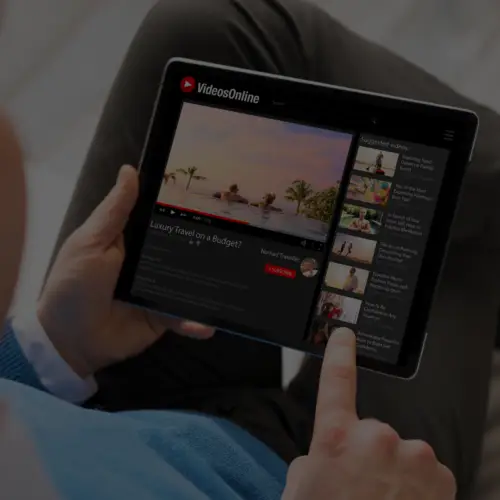29 Nov Reputation Monitoring for Large Brands
After attending Pubcon for the fifth year and speaking there for the third time, I’m happy to say the event was as successful this year as it has been in the past.
Brett Tabke and his team did a really good job putting on another great show that covered many disciplines and subject areas. If it’s still not on your road-map as a must-attend event, then it should be.
This year I discussed how large brands with noisy subject matters manage and maintain discipline while monitoring reputation. Below I’ve outlined the basics of what I went over, since in large part my PowerPoint was devoid of any of the important details I presented.
Obtain the most important information
Oftentimes large brands don’t have the time nor the capabilities, depending on the vertical, to ‘listen’ to every single piece of content that is created on the web about them. From what I have found from working at Ignite over the years and dealing with many major brands on the monitoring front is that there is an epic cartload of spam created on the web on a daily basis.
It’s enough at times to make your monitoring initiatives feel futile.
So it is absolutely critical to obtain the information you really care about. You need to monitor certain things and ignore others. If you’re monitoring the online reputation for Wal-Mart, listening to just the term ‘walmart’ for example doesn’t really do you a lot of good. Identifying specific targets or buckets of important information and honing in on those important conversations is paramount.
Now you need to understand your important keywords and who/what you should be monitoring. I recommend at a basic level to monitor the following:
Identify your important keywords
- Brand name
- Key executives
- Important employees
- Products
- Your competitors
Eliminate Noise
Now that you have identified the content that is important, you need to segment out the data into digestible buckets of information. Most tools I have used over the years have a way to do this through advanced Boolean queries. Below is an example of what one of those might look like.
Utilize tools that allow advanced Boolean queries
NEAR7((Walmart OR Wal Mart) AND (tv OR tvs OR televisions)) AND NOT (amazon OR buy)
The query above is something that might help the electronics team at Wal-Mart keep an eye on conversations that are relevant to them. It looks for mentions of walmart or wal mart then tv or tvs or televisions, all common variations. Then perhaps they want to make sure to weed out a bit of the spam which is typically attributed to folks linking to their Amazon affiliate sites so they remove any mentions that say amazon.
Finally, the near 7 field makes sure that the words are in close proximity to each other because typically off-topic mentions and irrelevant content comes in when folks utilize widgets or other mechanisms of getting content onto a site that isn’t necessarily related to the actual post. This helps alleviate that problem, thus increasing the chance of someone actually talking about TVs from Wal-Mart.
Whitelist the important sites, Blacklist the bad ones
Most marketers who work with large sites see conversations coming from a short list of forums and websites that commonly discuss the brand. Typically we recommend creating different boolean variables to pull in those conversations because they are identified as a much cleaner source. Essentially you are whitelisting the sites because you know they are not sources ripe with spam and noise.
You want to make sure you find their conversations as they are of higher quality.
Just like you want to whitelist important sites you also need to blacklist sites, as you will certainly find sites that continue to frustrate and complicate your monitoring efforts. Keep those sites from ever having a chance to show up in your stream by blacklisting them. Any tool worth its salt has a way to do this quickly and easily.
Automate Blacklisting with Rules
A more advanced method for handling this is to setup automated rules that block sites that are potentially spam. We have found that sites exhibiting traits similar to a spam site should automatically be blocked using the following sort of logic. Keep in mind this depends greatly on your brand’s situation.
Amazon affiliate code + Adsense + 3 keywords in domain + keyword “buy”
Clean stream of mentions. Ahhh…much better, right?
Now that you have a handle on how to develop a clean stream of mentions you should work on identifying the key people of interest and what departments need to see mentions as seen below.
Direct Conversations to important people
- CEO
- Product team
- Customer service
Each individual team has mentions it needs to see. Make sure you direct the most beneficial conversation to the people that matter. More often than not when you have to manage a large amount of mentions on a daily basis, no one person or entity inside of the company should wade through it all. Break up the data and get it to the people that matter.
Automated alerts in the form of E-mail or SMS
Most advanced tools and systems for monitoring your reputation have an option for E-mail alerts or SMS notifications when certain pieces of content are starting to gain traction. This is where having an inclusion list (whitelisted websites) helps because you can have the system monitor those domains for trending conversations that mention your company.
If you know specific pieces of content have the potential to cause damage, having an automated alert sent to you calling that specific piece of content out can be very helpful.
Understand your brand’s overall health
Many top level executives want to know their overall brand health. After all, you are spending all this time monitoring and the managers who see the day to day conversations have a really good grasp of what is going on. But how do you relate that to top level executives?
Pro Tip: Automated sentiment analysis is unreliable and often very inaccurate
Many of the monitoring tools offer automated sentiment analysis, however, I tend to stand by the fact they don’t serve much purpose other than looking pretty in charts.
We usually recommend sentiment reports through more sophisticated tools packages that tend to not be classified as ‘reputation monitoring tools.’
Pro Tip: If you automate, make sure you analyze enough data to meet statistical relevance
Look for tools that do feature level sentiment scoring
If you do choose to automate however, look for a tool that does feature level scoring. Simply put: feature level scoring is when a tool compares posts based on similar topics. Natural language processing can be much more accurate when doing so.
The alternative you see to this with most automated sentiment tools is that they try to compare all variety of posts vs. comparing them as similar posts then cross checking for sentiment. Below is an example of feature level sentiment scoring:
Feature Level Examples
- Entities (persons, companies)
- Topics (“hotel room,” “room service,” “location”)
- Concepts (“cleanliness,” “value”)
Pro Tip: Crimson Hexagon is a tool that does a good job scoring sentiment based on feature level analysis.
Reputation Monitoring Tools For Big Brands
I have talked quite a bit about tools so far. At this point you are probably wanting to know what are the best large scale reputation monitoring tools. I have compiled a short list below of tools to check out:
The pricing for many of these tools ranges from $500/month all the way up to $10,000+/month. $2,000/month seems to be a pretty average price tag for many top tier monitoring tools. You can check out a previous blog post of mine on the problems with many social monitoring tools to give you further insight into the fallacies of most monitoring tools.
Hire a Social API Engineer and build an internal tool
If those services noted above seem like too much to pay for just a tool, then I encourage companies to look into hiring an in-house engineer to build out a custom setup catered to the business. There is much more one can do with a custom solution in terms of automating rules, creating clean sources of data and funneling the data to the right people.
I have personally used over 5 different monitoring tools and I can say from experience that none of them do exactly what you need when you need it.
Engineers can still leverage reliable back-end support through a social discovery service called gnip and just worry about building the infrastructure to deliver clean results, when it matters, to the right people.
For some businesses it can make a lot of sense to go this route.
It’s not all about the tools
Tools shmools. At this point of the game whats failing you from monitoring your reputation effectively is not a lack of a dashboard or user interface. Its probably the fact you have hired 3 interns to read your posts and leverage some 10k/month tool.
Avinash puts it well with the following quote found here:
“Through my humble experience in this field I have developed a rule to fix this problem and achieve Magnificent Success. I call it the 10 / 90 rule. Here it what it says……..
- Our Goal: Highest value from Web Analytics implementation.
- Cost of analytics tool & vendor professional services: $ 10.
- Required investment in “intelligent resources/analysts”: $ 90.
- Bottom-line for Magnificent Success: Its the people.”
Granted this isn’t a complete overlap as he is talking about web analytics tools but I think it overlaps well with the monitoring space. You can’t expect to throw 50k a year at a tool and expect to get all the viable information necessary out of it by popping off a chart or report. You need to invest much more in the actual people who use the reports and manage the tools. A good general rule to follow: spend 90% on people, 10% on the tools.
Pro Tip: Take actionable steps based off of daily monitoring and make iterative improvements
Takeaways
Tools and people are important, but at the end of the day it’s even more important to have actionable takeaways on a consistent basis. Big brands do not suffer the same problem as smaller businesses. People are in fact out there talking about you, it’s just a matter of putting together the processes to digest it all.
At the end of the day you should be doing the following on a consistent basis based off of what people are saying about you:
- Improve your products
- Optimize the customer service pipeline
- Establish a unique selling point
- Mitigate brand damage






